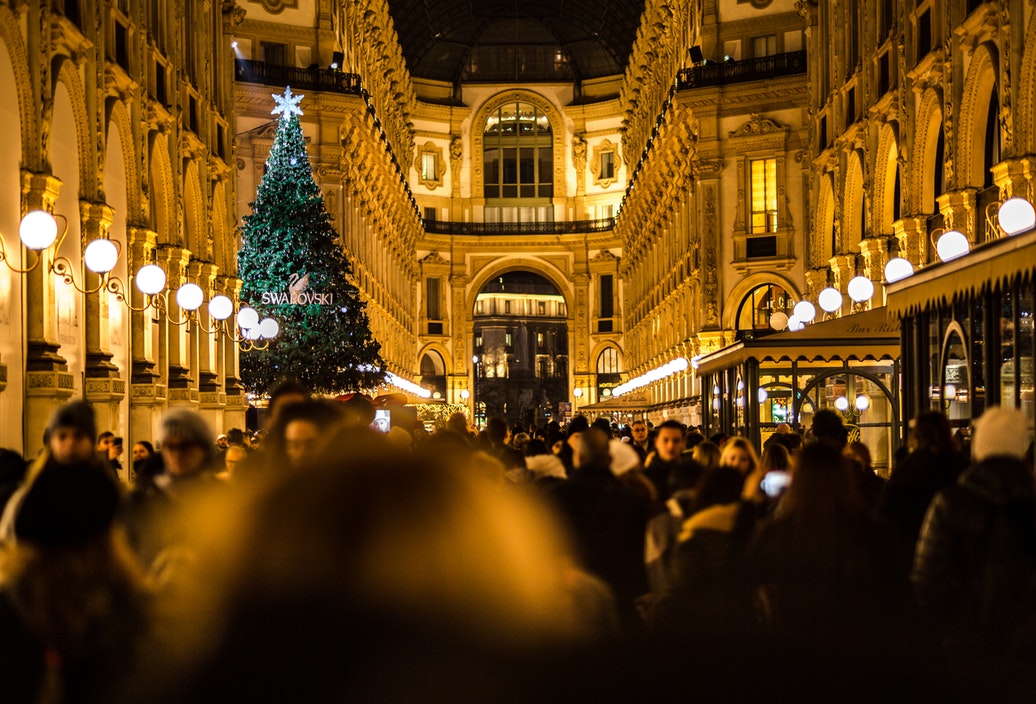Christmas vs La Befana: Festive Traditions
/With the most joyous time of year approaching for family occasions, festivities and fun. Some of the cultural differences for the merriest time of the year vary between England and Italy. If you have an interest in visiting either country, here are some of the cultural traditions you can expect or may even wish to use on your stay. Alternatively, you may also decide to use the below as inspiration for your own Christmas traditions.
CREDIT: Charl van Rooy
Dates, Gift Giving and Festive Figures
In the UK, Christmas falls on the 25th of December each year, this is the day the English will exchange gifts and open presents which have been delivered by Santa, who flies through the sky on his sleigh pulled by his reindeer. Leading up to Christmas in the UK, sometimes children will write Father Christmas a list of things they would like. The premise of whether a child receives what they requested depends on whether they have been good or bad this year.
Italy’s Santa Claus, Babbo Natale is becoming popular within Italy, with an increase in gift giving on the 25th of December.
Similarly Santa and Babbo Natale both wear red capes trimmed with white material. However, the Italian version of Santa Claus is slimmer and more regal in appearance. In comparison to Santa Claus in England, who possesses slightly fuller features, such as rosy cheeks, a chubby face and rounded stomach, representing a somewhat indulgent Santa. Most likely filled to the brim from all of the mince pies and milk the English typically leave Santa for his visit down their chimney on Christmas eve.
Although traditionally, La Befana is still the most popular figure in Italy at Christmas time. La Befana is an old woman who brings gifts to children on the 6th January, the date of the Epiphany. La Befana is referred to as the Christmas witch, with a typical witch-like appearance wearing a pointy hat, dark cape and flying on a broomstick. She is depicted as being covered in soot, as La Befana enters through the chimney much like Santa Claus. After visiting the child's house to give gifts, she is thought to clean the floor of any mess caused as she leaves. This is believed by Italians to sweep away the problems from the year. La Befana is both a unique and interesting figure to Italy alone.
Christmas Markets and Shopping
Italy holds two official sales periods per year, one in the summer and the other in the winter. At this time of year, stores can advertise clearance sales from 6 to 8 weeks! These are great discounts for those wanting to shop for authentic Italian gifts at a fraction of the original cost.
In England, sales are typically advertised throughout the year at any given point whenever a shop chooses. Although it is rare to find clearance sales leading up to Christmas apart from Black Friday events. Sales in the UK typically begin for all shops on the 26th December, on Boxing day.
Christmas Markets which originated in Germany are an example of a cultural tradition which has achieved popularity across the world, with Italy and England being no exception.
Every year people flock to the Best Christmas Markets In Europe such as London, Birmingham, Rome, and Verona, emulating a German tradition of selling German cuisine and alcohol, accompanied with selling unusual gifts.
Festive Decor
There are no real boundaries to when Brits pop up their Christmas tree. Those sometimes wanting to add warmth and joy to a usually bitter cold, dark and rainy time of year choose to put up their tree in November time. However more traditionally it tends to be around the first week of December. Decor tends to primarily always include a Christmas tree dressed in baubles, crackers, tinsel, and lights. With other selected decor pieces such as stockings and Christmas ornaments of other festive symbols such as reindeer and angels.
In Italy people usually begin to decorate for Christmas on the 8th December, this is the date of Immaculate Conception. Presepe (nativity scene) is traditionally used amongst most Italians to represent Christmas to depict the birth of Christ, with infant Jesus, Mary and Joseph. There are even live nativities which you can see in towns and cities of Italy, with real sheep and goats. For the Italian Christmas trees, hand-blown decorative balls made from Murano glass are a traditional decoration for the tree also.
From Christmas figures, symbols, markets and decor, there are differences and similarities between Italy’s and England's festivities, which you can either witness by visiting the country or incorporate into your own Christmas traditions.
More on Italian travel here…
Disclosure: This is a collaborative post.





















